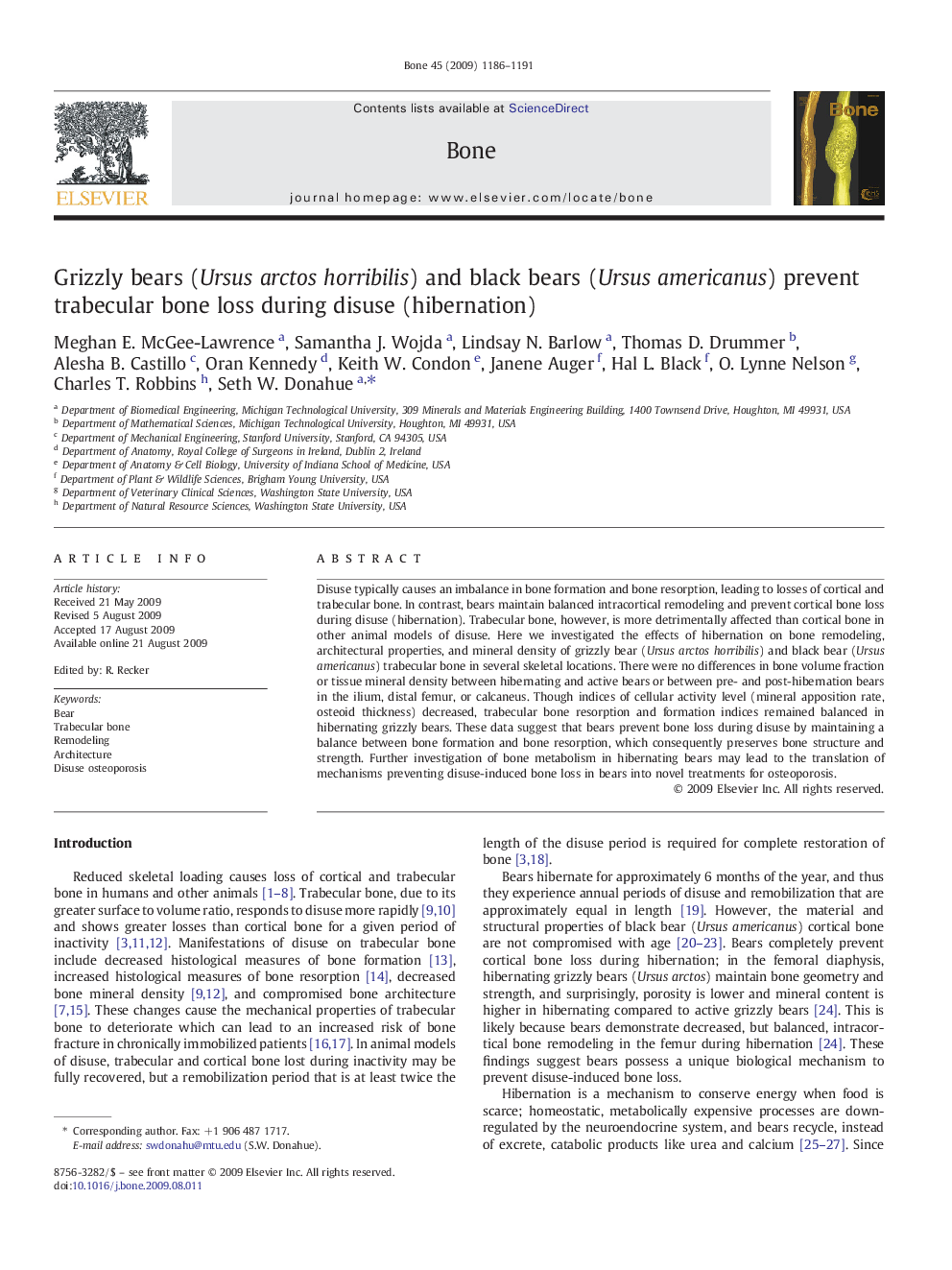| Article ID | Journal | Published Year | Pages | File Type |
|---|---|---|---|---|
| 2781326 | Bone | 2009 | 6 Pages |
Disuse typically causes an imbalance in bone formation and bone resorption, leading to losses of cortical and trabecular bone. In contrast, bears maintain balanced intracortical remodeling and prevent cortical bone loss during disuse (hibernation). Trabecular bone, however, is more detrimentally affected than cortical bone in other animal models of disuse. Here we investigated the effects of hibernation on bone remodeling, architectural properties, and mineral density of grizzly bear (Ursus arctos horribilis) and black bear (Ursus americanus) trabecular bone in several skeletal locations. There were no differences in bone volume fraction or tissue mineral density between hibernating and active bears or between pre- and post-hibernation bears in the ilium, distal femur, or calcaneus. Though indices of cellular activity level (mineral apposition rate, osteoid thickness) decreased, trabecular bone resorption and formation indices remained balanced in hibernating grizzly bears. These data suggest that bears prevent bone loss during disuse by maintaining a balance between bone formation and bone resorption, which consequently preserves bone structure and strength. Further investigation of bone metabolism in hibernating bears may lead to the translation of mechanisms preventing disuse-induced bone loss in bears into novel treatments for osteoporosis.
